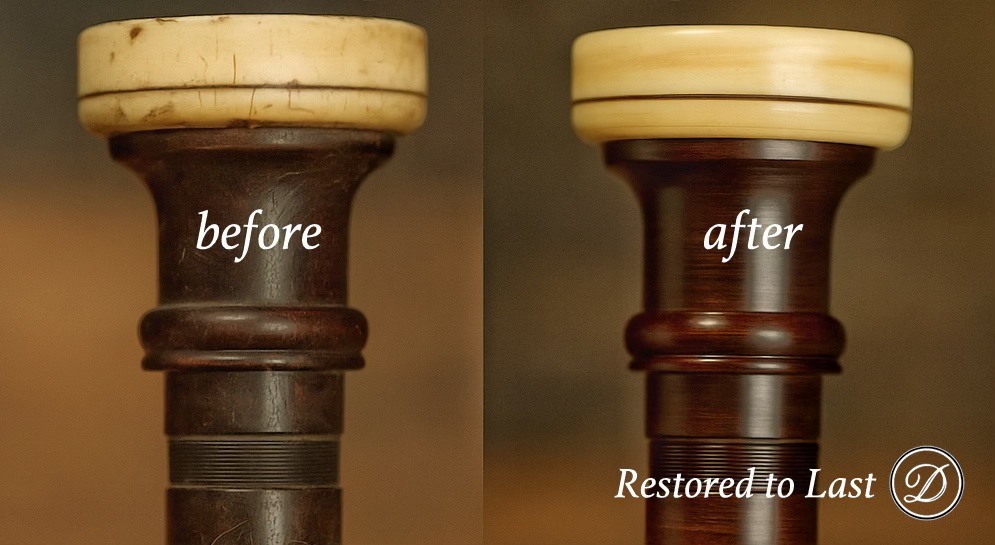How Often Should Vintage Bagpipes Be Restored? | Dunbar Bagpipes
2025 Aug 13th
One of the most common questions we hear from owners of vintage bagpipes is:
> “How often should a set be restored?”
The answer depends on what you mean by restoration, how often the pipes are played, and the conditions they’re kept in. Below, we’ve put together a guide to help you keep your vintage instrument performing beautifully for generations.
What Is a Full Restoration?
A full restoration is an in-depth process that can include:
* Complete disassembly
* Crack repair or invisible whipping
* Cleaning and oiling of bores
* Restoration or replacement of mounts and ferrules
* Re-hemping joints
* Polishing and finish work
Most vintage sets only need this level of work every 20 to 30 years — sometimes longer if they’ve been well cared for. Some instruments have gone 50 years or more without requiring a full restoration.
You should also consider a full restoration sooner if you notice specific issues, such as internal deterioration, loose fittings, or cracks.
Regular Maintenance: The Key to Longevity
Preventive care is what keeps you from needing major work too often. We recommend:
* Re-hemp joints as soon as they feel loose or squeaky
* Inspect bores every 1–2 years
* Lightly oil the bores every 6–12 months (especially in dry climates)
* Polish or wax the wood every 1–2 years
* Control moisture in your case with silica gel year-round
This kind of upkeep can dramatically extend the time between restorations.
Special Situations to Watch For
If you play regularly in a band or travel often, inspect your joints and stocks annually.
If your pipes are stored long-term, open the case at least once a year to check for:
* Humidity changes
* Joint tightness
* General condition

Signs It’s Time for a Restoration
* Mounts are loose, cracked, or shrinking
* Joints won’t hold a hemp seal
* Hairline cracks in tuning pins or stocks
* Bore feels rough or sticky to the touch
* Tone is dull or less responsive than usual
If you see these signs, it’s worth having your instrument assessed before more serious damage occurs.
Why Quality Vintage Pipes Last
With consistent care, vintage pipes — especially from top makers like Lawrie, Henderson, and Robertson — can last well over a century. The craftsmanship, materials, and design of these instruments mean that proper maintenance isn’t just preservation — it’s ensuring your pipes remain as playable as the day they were made.
Not Sure If Your Pipes Need Work?
If you’re unsure whether your set needs a tune-up, minor repairs, or a full restoration, we can help.
At Dunbar Bagpipes, our restoration team — led by Rick Pettigrew, one of the most trusted bagpipe restoration experts in the world — can inspect your instrument and recommend the right course of action.
Contact us today to arrange an assessment and keep your vintage pipes sounding their very best.
If you’d like, I can also create a **matching Facebook teaser post** that links to this blog, so you can promote it directly to pipers and collectors online. Would you like me to draft that next?
